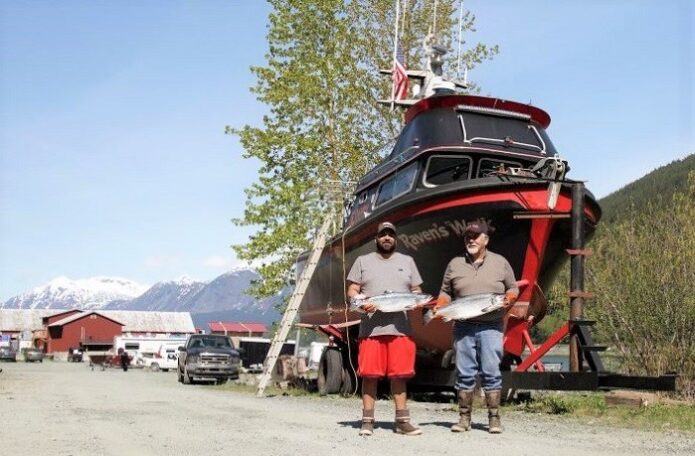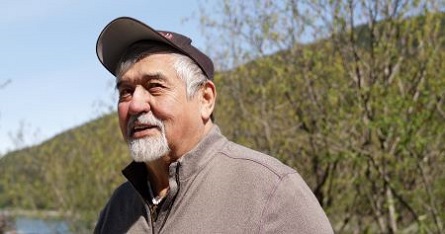
Native Alaskan Bill Thomas is a commercial fisherman, a politician and a sustainability advocate. He gillnets for salmon and long lines for halibut alongside his son Cole, the “heir apparent”.
We spoke to him about his 52-year Alaskan fishing career and protecting the future – both of his business and of the fisheries in Alaska, as per the State Constitution.
Born to fish
 Bill Thomas was born, raised, and to this day still lives in Klukwan, Haines, Alaska. That’s at the top of the so-called Panhandle, 40 miles from the Canadian border and 90 miles from Juneau, Alaska.
Bill Thomas was born, raised, and to this day still lives in Klukwan, Haines, Alaska. That’s at the top of the so-called Panhandle, 40 miles from the Canadian border and 90 miles from Juneau, Alaska.
You could say that Bill’s 52-year career as a commercial fisherman was somewhat inevitable. Growing up, his great uncles, grandfather, uncles and everyone he knew was involved in the Alaskan fishing industry in some way or other. He started fishing with his uncles from the age of about 12 or 13.
“My job was putting the fan belt on the engine to keep the mechanical drive from pulling in the reel that brought the net in. And I’d sit inside the cabin and make sure that the belt stayed on the engine,” he recalls.
Stints working at the local cannery and on a tender followed, with Bill drafted into the military in 1966. When he returned from Vietnam in 1969, he went back to fishing with best friend Larry Albecker, and he has been gillnetting ever since.
The heir apparent
Bill and his wife raised five children and one of them, Cole, has been fishing with his dad from the age of 12. Now 39, he calls himself “the heir apparent” and the hope is that one day he will continue the family tradition, perhaps with his brother Gabriel.
According to Bill, Cole’s reputation is for quality fish.
“He won’t let us stay out over three days. We’ve got to get in and deliver the fish because of the quality,” says Bill.
“I want him to gillnet also, but he doesn’t want to. I said, you don’t have to be a highliner. Just because I’m a legend in my mind doesn’t mean you have to be. But the boat has a reputation. So, you know, I think that scares the kids to try to compete with what I do. But I have said, I have been doing it for 52 years, it’s different.”
Alaskan Fishing Sustainability
In Haines and across Alaska, sustainability is managed carefully to ensure that that fish continue to come back every year. In fact, sustainability has been embedded in the Alaska State Constitution since 1959.
How does this work in practice? Bill explains that quotas and escapement goals play a critical role; Alaskan fishermen are allowed to catch a certain quantity of halibut each day in terms of weight, but in salmon, the fisheries monitor the stock levels. They have fishing districts, or areas, that they open or shut depending on how close they are to their escapement goals.
“It’s all about making sure the fish get up the river and spawn and they come back in four, five, six years.
“When we do have a problem, say with a lake not getting enough fish, we’re taken off completely and we allow 100 percent escapement, or as much as we can call 100 percent, into the system to rebuild it immediately.”


